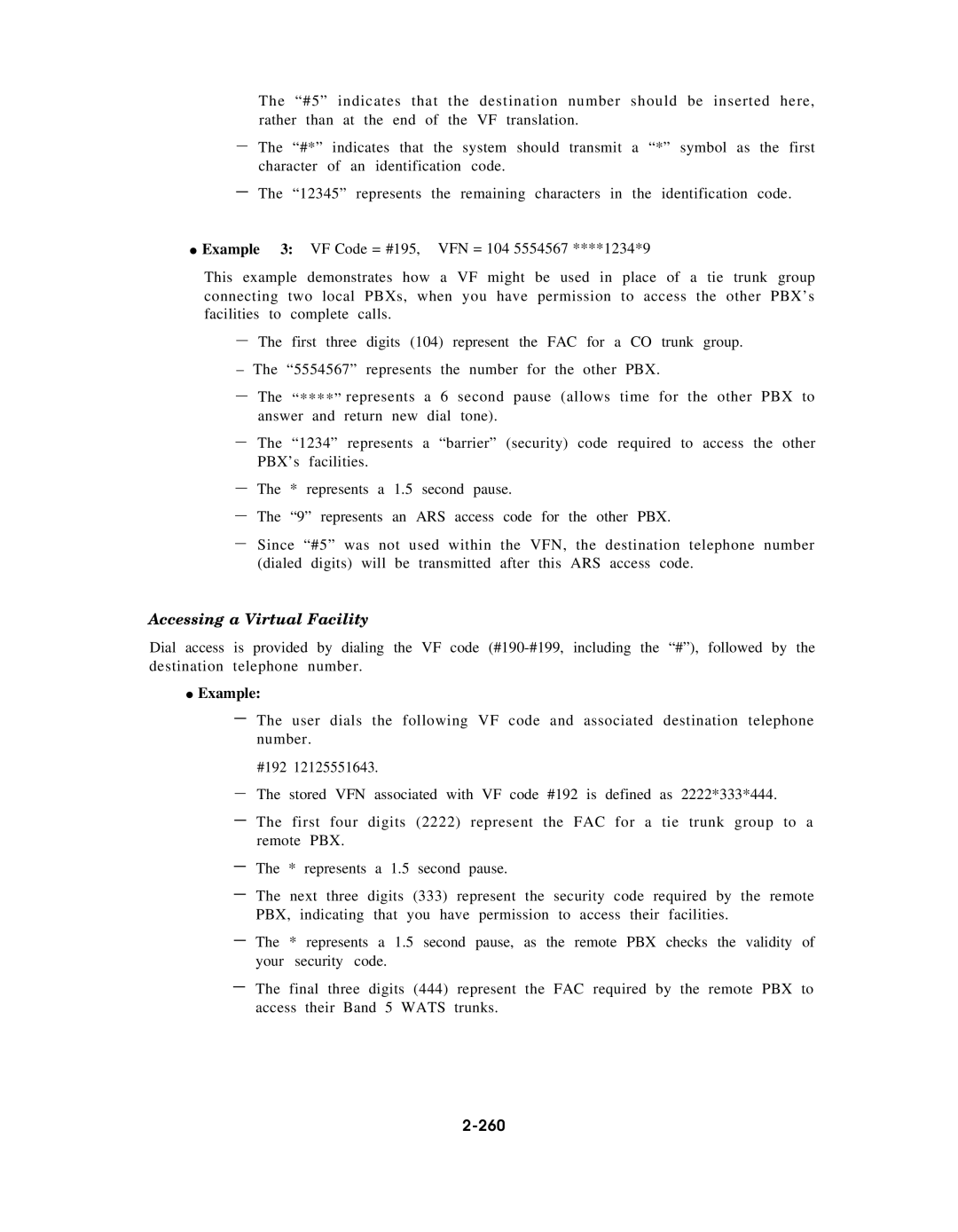The “#5” indicates that the destination number should be inserted here, rather than at the end of the VF translation.
— The “#*” indicates that the system should transmit a “*” symbol as the first character of an identification code.
— The “12345” represents the remaining characters in the identification code.
● Example 3: VF Code = #195, VFN = 104 5554567 ****1234*9
This example demonstrates how a VF might be used in place of a tie trunk group connecting two local PBXs, when you have permission to access the other PBX’s facilities to complete calls.
— The first three digits (104) represent the FAC for a CO trunk group.
– The “5554567” represents the number for the other PBX.
—The “****” represents a 6 second pause (allows time for the other PBX to answer and return new dial tone).
—The “1234” represents a “barrier” (security) code required to access the other PBX’s facilities.
—The * represents a 1.5 second pause.
—The “9” represents an ARS access code for the other PBX.
—Since “#5” was not used within the VFN, the destination telephone number (dialed digits) will be transmitted after this ARS access code.
Accessing a Virtual Facility
Dial access is provided by dialing the VF code
●Example:
—The user dials the following VF code and associated destination telephone number.
#192 12125551643.
— The stored VFN associated with VF code #192 is defined as 2222*333*444.
—The first four digits (2222) represent the FAC for a tie trunk group to a remote PBX.
—The * represents a 1.5 second pause.
—The next three digits (333) represent the security code required by the remote
PBX, indicating that you have permission to access their facilities.
—The * represents a 1.5 second pause, as the remote PBX checks the validity of your security code.
—The final three digits (444) represent the FAC required by the remote PBX to access their Band 5 WATS trunks.
